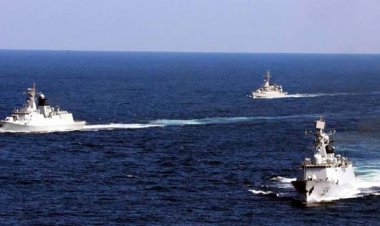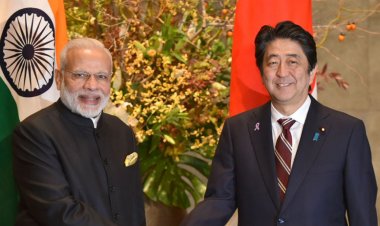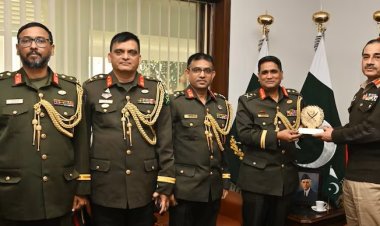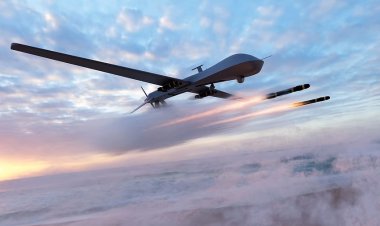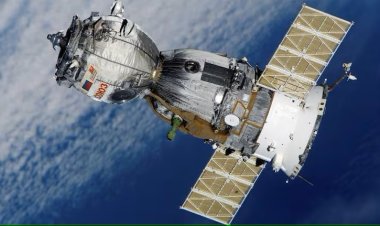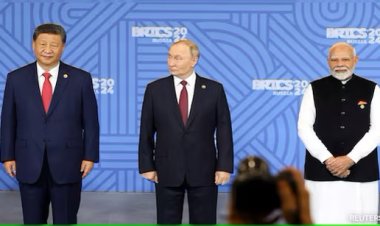India's Options Beyond the QUAD (Part 2)
The following commentary looks at the QUAD alliance in great detail to understand India's position within this alliance and the more significant geopolitical relevance and significance. This article also examines the complex politics of the Asia-Pacific and the role the US partnership has to play in this complex setup.
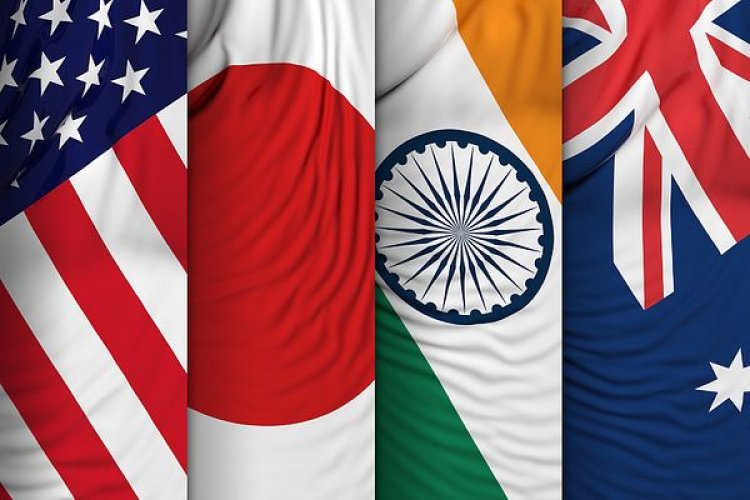
Commentary (Part two of a two-part series)
By Karsten Riise
This article is the second part of a 2 part series exploring the complex geopolitics of Asia-Pacific. Part 1 of the article can be accessed here.
India can manage alone
We are constantly witnessing new revolutions in military affairs. The use of military internet, precision weapons, and space-based assets were one. The USA is no longer alone here – Russia has caught up and applied its lessons and doctrines, which are worth learning. China does too. India has a land-frontier in the Himalayas to the north and a maritime frontier in the Indian Ocean. The Himalayas are a formidable barrier. The Line-of-Actual Control (LAC), the de-facto border between India and China, is relatively stable. Some eruptions happen from time to time. These eruptions have tragic costs in lives and stir up emotional animosities on both sides. Be this as it may, the emotional and political effects in the respective domestic politics are spin, is more significant than what is strategically actually happening. Because in the strategic picture, no significant change of the LAC has happened for decades. And nothing will happen because both India and China are nuclear-armed, and no big armies will unexpectedly burst across the Himalayas. India must be vigilant, but with the precautions which India is already building infrastructure to secure her northern border. Since the Kargil war, India has come a long way and has better secured its border to the West. Unfortunately, an aircraft is sometimes shot down for crossing the line resulting in some skirmishes. Both sides indulge in infiltrations along the Line-of-Control (LOC). Still, between two heavily armed, well prepared nuclear powers, the de-facto border will not change in any direction either. India has conventional superiority, while Pakistan has little strategic depth to the south and no strategic depth in the centre and north and is ill-prepared to use nuclear weapons to attack her territory. The extensive discussion in the Indian Ocean. I predict that a new revolution in maritime warfare is coming with the rapid development of very long-distance air power at sea.
The USA is totally behind here. The USA neither has the very-long range aircraft nor a vast arsenal of very long-range hypersonic missiles for that. The US Navy is centred on aircraft carriers that are vulnerable targets for airborne long-range hypersonic missiles and land-based theatre missiles called "carrier killers". As mentioned above, the US Navy and Air Force for the Pacific Ocean and the Indian Ocean are structurally centred on long-range bomber concepts and aircraft carriers conceptualized in the 1941-45 Pacific War. The F-35 exemplifies this. The F-35 is flawed for modern requirements because with short-range, low max-speed, low service ceiling, and low armament (hardpoints), the F-35 does not have the vast range and speed needed for modern warfare over great distances.
In contrast, Russia has developed such modern concepts with very long-range combat aircraft like the Su-35 and the Su-57 with super-cruise speed to overcome very long distances quickly. This type of aircraft with many weapons, armed with highly long-range hypersonic missiles combined with ground-based carrier-killer missiles, and space-reconnaissance are turning aircraft carriers and their task-force destroyers into dead ducks. Around 1940, the US revolutionized naval warfare with aircraft on ships (carriers), making the big battleships obsolete. We now stand before the next round of that same development: Very-long range aircraft with very-long-range missiles make aircraft carriers – and probably all capital ships on the surface – a thing of the past. With this kind of sea power from the air, based on land, combined with medium-range ballistic missiles (1,000-3,500 km) and space-based assets for surveillance, the Indian Subcontinent itself is the only "aircraft carrier" which India will need to fight and win naval wars in the Indian Ocean. A strong air force will further cement India's safety in the Himalayas. In short, India can take care of herself.
India's options beyond the USA
The USA does not want equal partnerships. The USA may say so, but the USA enjoys hegemony – over India also. Right after the end of the (previous) Cold War, the USA "decided" (by itself) that the USA would not "allow" any other power anywhere on Earth – be it in Asia (including India), or Europe or the EU – to ever emerge again which could command enough resources to even think about competing with the USA. This was decided in US military papers and reflected in the works of the America based think-tanks. And it remains the aim of the USA. The neo-colonial way the US Navy recently trampled on India's maritime sovereignty (the EEZ) demonstrates this: the USA wants global hegemony with no equals. It is also essential to see the implantation of US officers in India as a way for the USA to influence India from within. Likewise, training programs for Indian officers in the USA can also be used for indoctrination and implanting US narratives, including untruthful stories, to turn Indian officers in favour of the USA. For many decades, the USA has used military "training" in the "School of the Americas" in Fort Benning as a tool to recruit and influence military coup-makers in Latin America and likewise in Asia. India has a staunch tradition of non-alignment. The primary dispute is a dispute between the existing global power USA and the rising power China. This situation between the USA and China is the classic "Thucydides trap" known since the Peloponnesian War when Athens started an unprovoked "pre-emptive" war to stop the rise of the then-upcoming power Sparta in 431 BC, nearly 2,500 years ago. India is a rising world power that is about to overtake the USA after China has done so - a fact also underscored by Kishore Mahbubani. India's non-alignment gives India a platform to act independently and is still something for India to maintain and build upon.
There are good old ties between India and Russia — ties that have mainly included active cooperation in the defence industry. Many people in India and Russia are sad that the India-Russia ties have been allowed to atrophy lately. No need to conjecture here about the reasons why this happened. India-Russia security ties need to be renewed. There is significant untapped potential for India with Russia. It is an area where India also can develop the Indian high-tech and defence industry independently of the USA. The US defence industry is ineffective and immensely wasteful. The US defence industry has 40 years of tradition for "gold plated weapons" – extensive US weapons systems made hyper-expensive to suck out trillions of dollars from the US society without delivering substantial value. The Zumwalt and F-35 scandals are illustrative of such worthless but hyper-expensive US weapons programs. The USA would also like to earn trillions of dollars out of India with such "gold plated" weapons of minimal value made in the USA. Russia is good at two things. First, the Russian defence industry, in contrast to the USA, has limited budgets. The Russians are forced to get the maximum value out of their budgets. Secondly, Russia has developed innovative, effective, and affordable solutions – including countermeasures to US military might. This is important for India. The USA has a habit of turning on its former partners. To stay free and secure, India should have countermeasures even to the US military.
NATO is a problematic and ambiguous entity – complicating India's options for building relations. Sweden and Finland are not neutral. They are de-facto 100% NATO members. Sweden and Finland are so involved in NATO programs, joint exercises, joint command - everything at all levels, that Sweden and Finland, in reality, are full NATO members and front-fighters on behalf of the USA against Russia. This is the future the USA wants with Ukraine and Belarus — bind them with NATO "partnerships" until these countries function as de-facto frontline fighters against Russia. It shows how slippery NATO's "partnerships" are. India must guard herself against this.
The USA tried the same thing, binding Central Asian countries into such arrangements but failed. The curious thing is that Turkey is still a NATO member; in reality, Turkey today is a 'non-NATO' country. Turkey is even closer to Russia than to NATO and the USA. This demonstrates that NATO is indeed very blurred when it comes to its purposes and nature. Some are members through "partnerships", though they are officially "neutral". Another is officially a member of NATO but de-facto closer to Russia. India can learn from this. India must be aware of all the USA and NATO pitfalls to convert India into a tool. India has to be on its guards to prevent this. But as Turkey proves, it is up to India to take from NATO relations what India can use and not let India and her Indian officers be "converted" into USA tools. Being mindful about this, India might selectively use some of the wide range of NATO programs for her purposes. NATO has two things, which the USA itself cannot offer. First: NATO is a diplomatic contact with European decision making. Instead of the USA influencing Indian officers, this is a way for India to promote herself in Europe. Second: NATO is a well-integrated multinational military cooperation.
India will gain first-hand experience in multinational military operations. The USA will soon no longer be the number one economy in the World. US global involvement already receded very fast under Trump. Global security without the USA is coming in. Russia has experience with NATO partnerships. Good or bad, India also wants to strengthen its old ties with Russia. It might be a good idea for India to discuss with Russia how to benefit from this before approaching NATO. While Africa needs to take over its security with indigenous African security structures, African multinational security cooperation with South Asia is also potential. To contribute to Africa, India needs experience in practical multinational security operations, which NATO can provide. My message to India is, "Do not become close with NATO. But learn multinational security from NATO - and work with Africa."
India Can Do It. India needs strength not to feel pressure from China. Then it will be easier to find solutions together. India must continue to build self-dependence. India does not need the USA. The USA wants global hegemony, not only over China but over India too. India should not come under US dominance under the excuse of "US protection". Using China as a boogeyman to implant US influence into Indian politics and military, the Quad is a lure. India has all it takes to manage her affairs. India can stay secure by herself. India can choose freely among many partners – and should. Countries with peaceful neighbourhoods can grow fast. India does not need to fear for its security. Now politics can secure peace. This is good news.
Karsten Riise is a Master of Science (Econ) from Copenhagen Business School and has a university degree in Spanish Culture and Languages from Copenhagen University. He is the former Senior Vice President Chief Financial Officer (CFO) of Mercedes-Benz in Denmark and Sweden. At the time of appointment, he was the youngest and the first non-German in that top position within Mercedes-Benz’ worldwide sales organization. He writes regularly for the Russian International Affairs Council.
Disclaimer: This paper is the author’s individual scholastic contribution and does not necessarily reflect the organisation’s viewpoint.

